The bus drives in the fog while leaving Myvatn. Places look ghostly. Fumaroles. Mountains. Lava fields. I have left the oasis of Myvatn to return to the center. To the Highlands. Time for a three-day hike on the Askja trail. A last hike in the middle of the volcanic desert before reaching the fjords of the West. The Askja Trail is a five-day crossing from Herðubreiðarlidir to Myvatn through Askja, a gigantic caldera filled with water. I do not have time to do the five days. So I will walk from Herðubreiðarlidir to Aksja.
The black sand dotted with green grasses draws stunning paintings in the rising fog. I would like to take pictures but the bus is not stopping. It is hot in here. Way too hot. I have only one desire, to get out. And find fresh air. With its big truck wheels, the bus crosses big rivers. Other passengers are fascinated by the fords crossing. They rush to take pictures. The bus guide tells us about Iceland. “Iceland is barren. And I like the fact that because of this lack of vegetation, when the weather is good, I can always see the horizon.”
Herðubreiðarlidir finally appears, a small oasis of greenery in the middle of the desert. I retrieve my bag and walk away leaving the passengers following their guide for a quick ride around. They go directly to Askja. I take my time. Three days to reach it. In the distance, Herðubreið, national symbol, queen of the Icelandic mountains, towers over the place from its height. 1682 meters of magnificence. Herðubreið in English means “broad shoulders”, which seems appropriate for the big flat-topped mountain. A belt of cliffs surrounds a gigantic plateau on which stands a small crater. From a distance it looks like a crown. All around, the “desert of crime”, Ódáðahraun, spreads its lava fields. Today no more outlaws rejected by society having taken up residence in the holes of the lava fields. Just tourists. The place is one of the driest places in Iceland. It rarely rains. Except this week apparently.
I have set foot on another world. A devastated, torn, solidified world. An immense lava field, or more exactly a multitude of lava fields, are covering the landscape. The blocks are big, sometimes gigantic, rough, sharp. The soil is torn, broken, crusted, infertile. I climbed the rocks amazed by their pleated appearance, forming curves, circles. Huge blocks stack on top of each other. Elsewhere a subsidence forms a hole in the black landscape. My mind is deluded. It has the impression of walking on the still alive lava, to survey the Mordor. Did Peter Jackson got inspiration from Iceland to create one of the scariest environments of his films? A man makes me almost jump in the air. I thought I was alone in the world. He is running. A few minutes later, another silhouette. Follows by another and again another. These are the participants of the Fire and Ice Ultra Trail 2019 that takes place this week. A good hundred people parade at different paces. I bypass Herðubreið then follow a straight line across the black expanse. The runners have disappeared. Funny white lichens have taken up residence on the solidified lava. It looks like mold. Or snowflakes. I am fascinated by the strange landscape. Cones, cracks, big blocks. So much variety appeared when the murderous flow went cold years ago!
In the distance, Brærðarfell finally appears. My shoulders hurt. The refuge is closed, locked. Impossible to open. I need a code and I have to pay. But the weather is not that bad tonight and I set up my tent on the small wooden deck surrounding the shelter. There is not a sound. Places are empty. Tonight, only I will sleep in the lava fields.
But I can not sleep. I am cold and the cold keeps me awake. I doze watching the hours passing slowly. In the early morning, fog clings to the little jagged hills around. Herðubreið has disappeared. I continue my progression through the lava fields. All around me, as far as the eye can see, there is only that. Miles and miles of fossilized lava. Released many years ago by the volcanoes of the area. Around me is silence. Absolute silence. Not a bird’s cry, no airplane engine in the sky, even the wind is hardly heard. The rubbing of my coat against the bag, my nose sniffing, the slamming of my walking stick against the stones, all of that make a hellish noise. It is drizzling. I hike for kilometers on the Dyngjufjöll mountain range. A black area, with peaked cliffs and broken contours, appears in the mist. The place makes me almost shiver. Too cold, too austere, too sad. I run, hiking as best I can, jumping on the lava blocks. In the shadows, I have the impression of walking on the ruins of a vanished world. Death has invaded the place years ago and life only reappears in small touches. Some lichens. Foam. Some flowers. And a bird! A small spotted bird that appeared on the periphery of my vision. I barely had time to look at it before it disappeared. But this stealthy contemplation of another living being in this desolate world reassures me. I feel better.
I swallow the kilometers, driven by the desire of avoiding the approaching rain. Another older lava field appears. It is almost entirely covered with the strange white lichen. It is raining but the sun appears between the clouds. Water seems to be falling out of nowhere. The world suddenly does not seem so cold anymore. I pass a gigantic flow of black lava too bristly to be walkable. More recent, it is covering the old field. A field of death on a field of death. Under my feet the rock has changed. I walk on small sand-colored friable pebbles. The yellow expanse looks like a real desert. My shoulders hurt and I am hungry. Eighteen kilometers traveled with only two short breaks. In the distance, at the foot of a large mountain range, Dreki refuge seems to be waiting for me. It is raining again and the snow is falling on the heights. Tonight it will be safe night in the shelter.

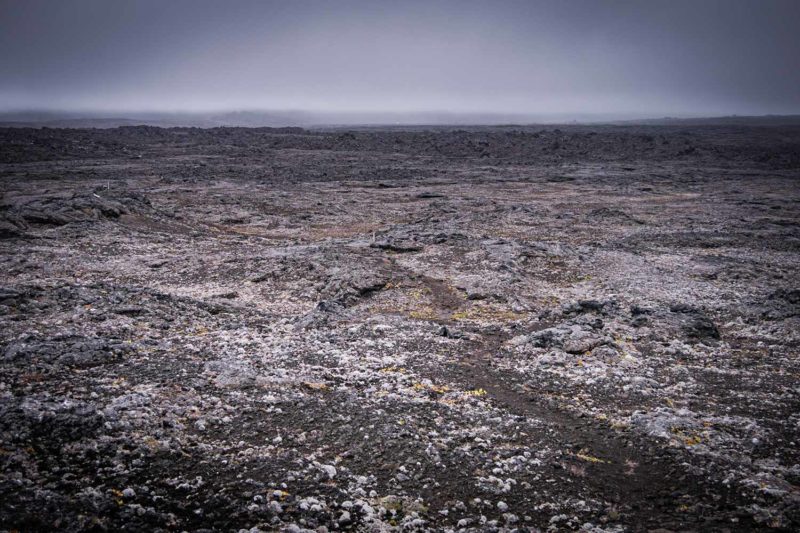
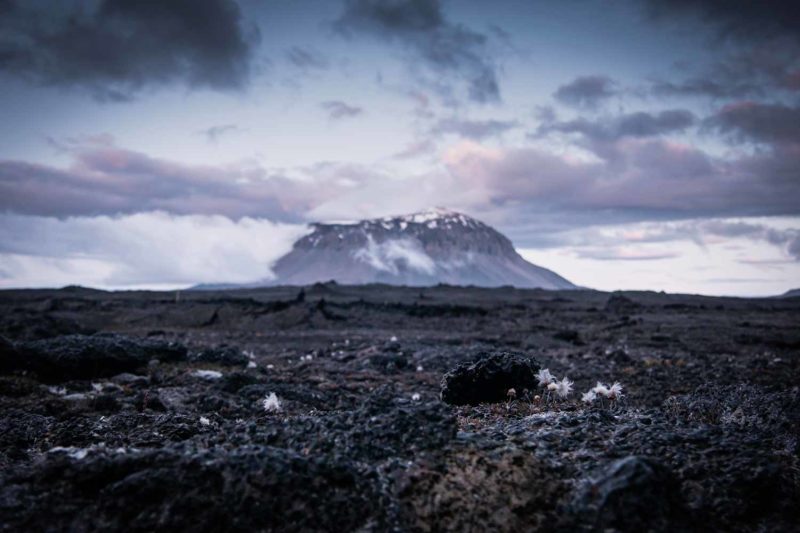
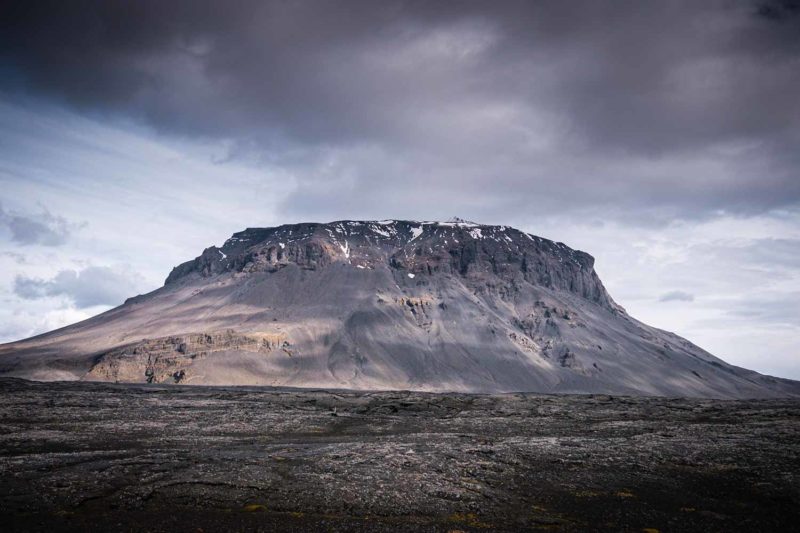
The surprising Herdubreid mountain.
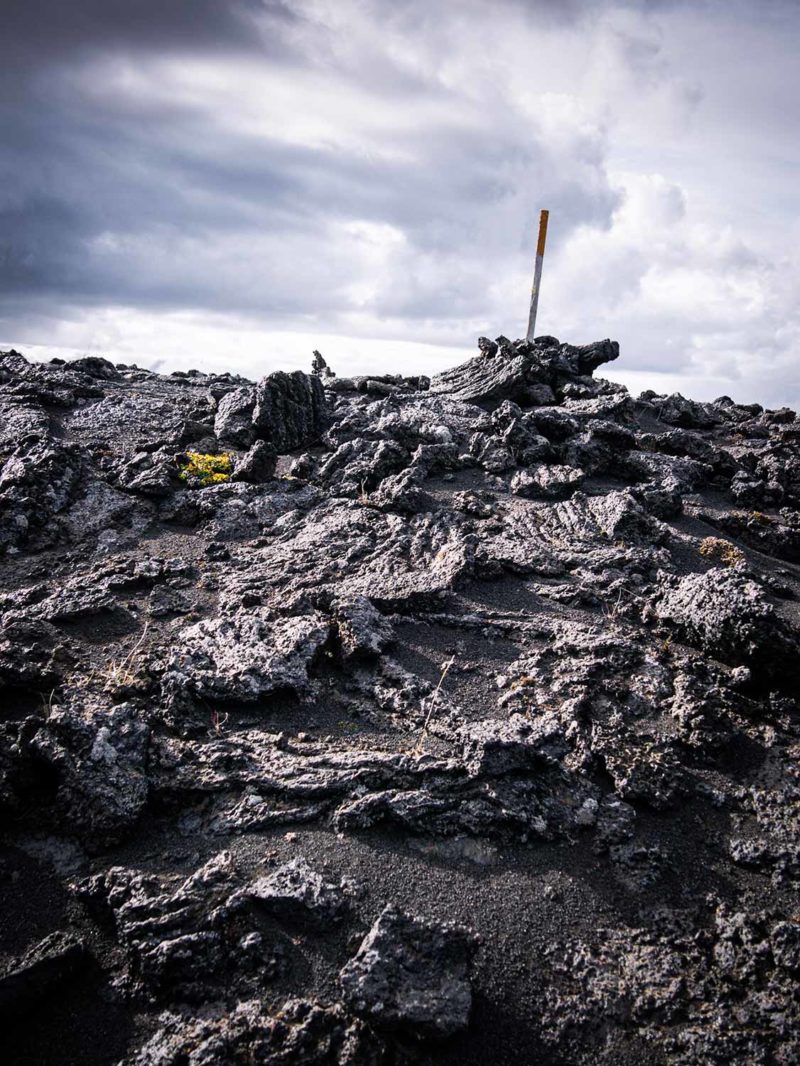
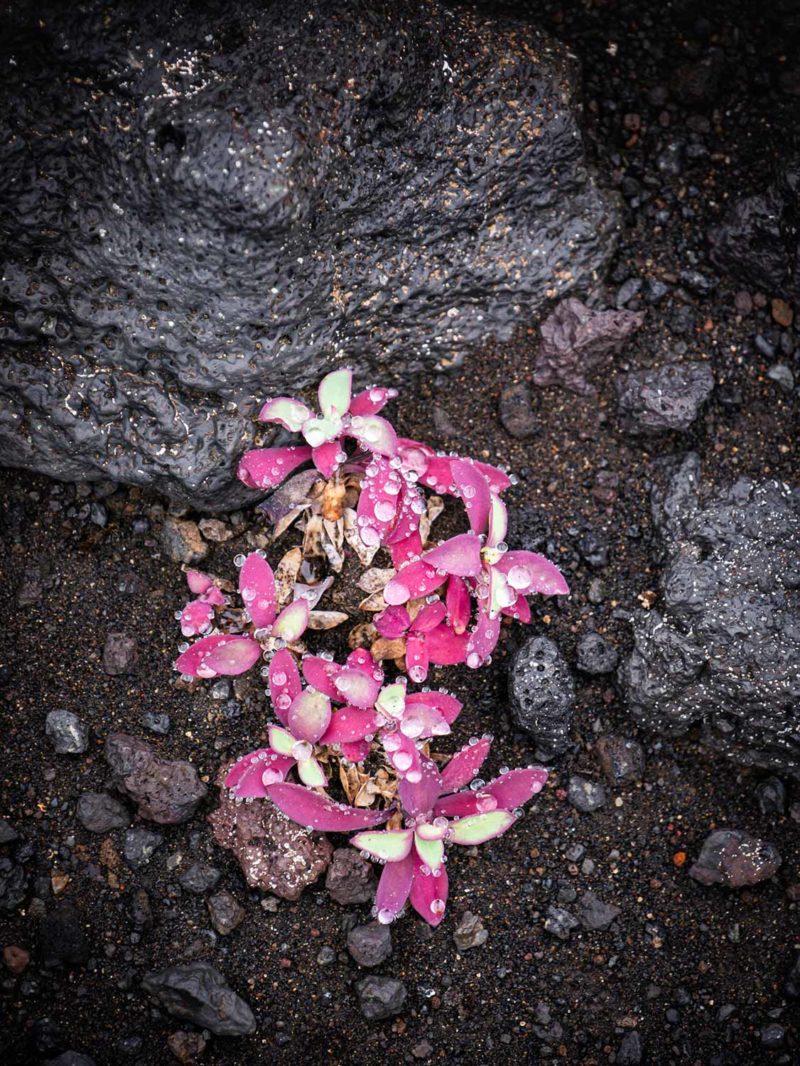
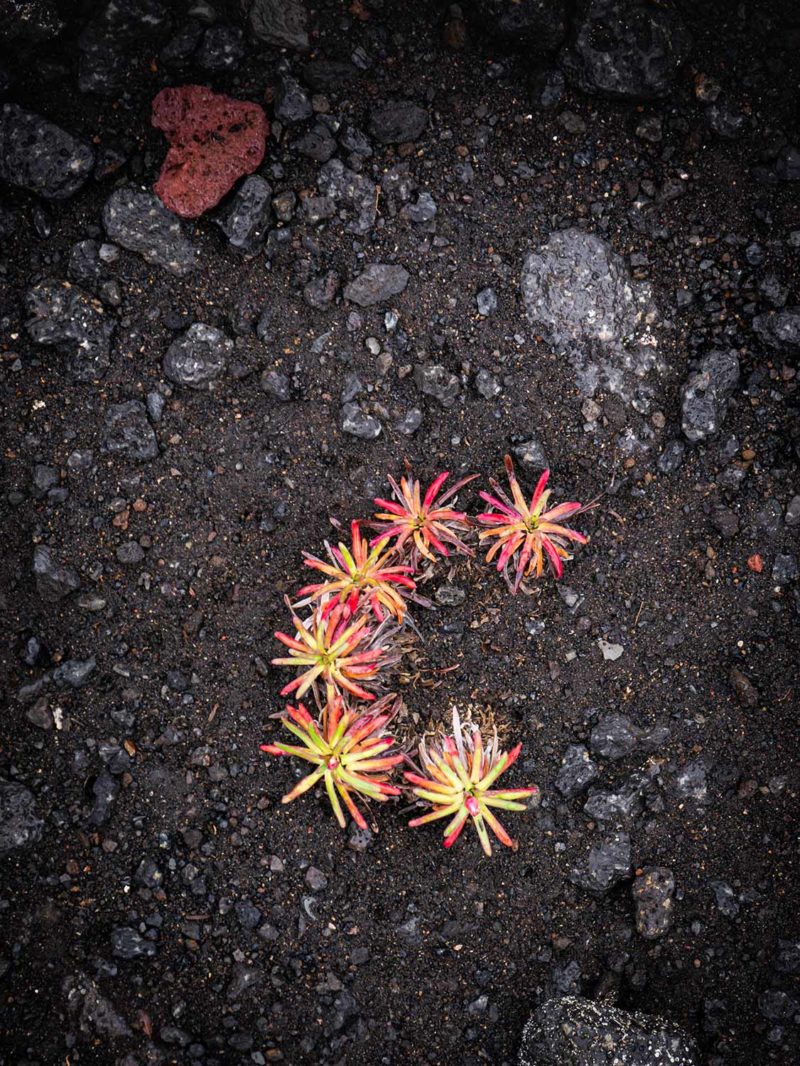

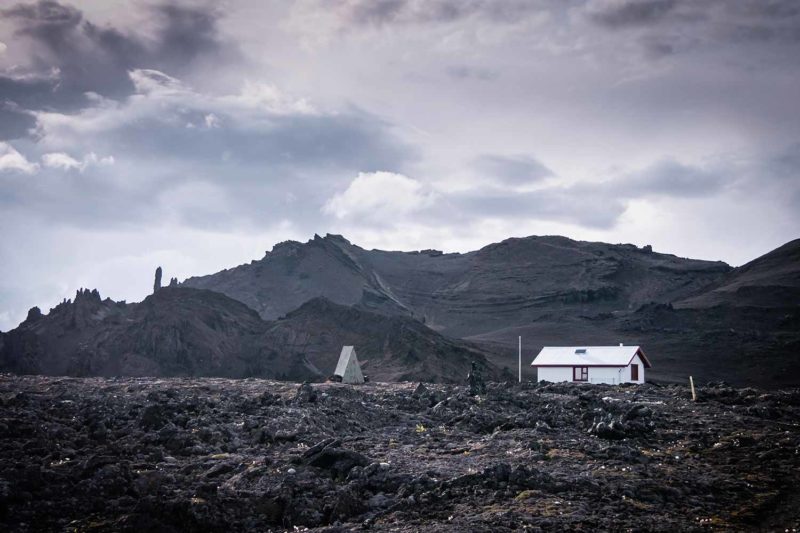
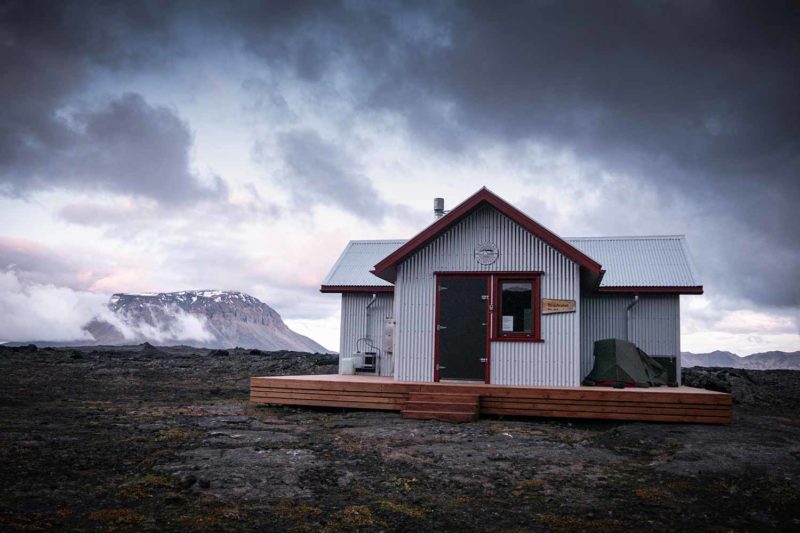
Bræðrafell hut.
It is snowing. Since this morning, it is snowing without stopping. Not strongly but enough to gently cover the tops of the mountains around me. Askja, the great caldera filled with water is only eight kilometers from me. Eight kilometers beyond the mountains of the Dyngjufjöll massif. This is the highlight of the hike, the place I came to see. The one for whom I have traveled kilometers of lava fields. A hint of worry finds its way into my mind. The weather is bad, the clouds are low. Will I be able to see something? A young American man, a geology student, here for more than a week, tells me that he made the hike to Askja yesterday over the mountains. There was almost no snow, the path was passable. And the view superb. Yet yesterday, the weather was as bad as today. But a clearing in the middle of the day opened the heavens. Will the sky be that clement today too?
I start the climb, the snow tingling my face. A hundred meters higher, I am in the snow. Everything is white. Contrasting violently with the black lava blocks. An ink painting. I walk through the work of a great master, eyes dazzled by the beauty of the place. The wind has calmed down and the snowstorm too. I progress in an untouched world where no one has gone before me. My fresh footsteps seem to soil the immaculate space. It only took about ten hours to cover the world with a nice white coat. Below, in the valley, I distinguish the hilly plain. But the landscape is disappearing around me. I continued to climb and I entered the fog. I reached the limit of the sky, the one where I touch the clouds. My visibility is reduced to a few meters and I hardly distinguish the signposts of the direction to follow. I walk in a white and fuzzy world. I do not know how to distinguish the ground to the horizon. Where does the ridge stop? Where does the void begin? I sink deeper and deeper into the snow. And nobody. My mind is slowly going crazy. Is it a good idea to continue? When will I finally start going down on the other side? But I continue. The crossing is not really dangerous, the ridge being wide most of the time, but still impressive. The fog would be thicker, I could not have continued, unable to distinguish the way forward.
As I begin to give in to anxiety, the path finally turns and begins to descend. That’s it, I crossed the mountains, I will reach Askja. Going down, I will go back under the fog and find clear view again. But I go down into a fuzzy world, skirting the side of the mountain, eyes staring desperately at the place where I think the caldera is. The gigantic caldera where Lake Öskjuvatn and its dark blue waters are. But nothing. The fog remains stubbornly present and I go down, disappointment growing in my mind. The world of black and white seems to never want to finish. A group of birds overtakes me and tells me that I am approaching my destination. Silhouettes appear ghostly in the fog. And I find myself right on the edge of the Viti crater. At the gates of Hell. Created by the volcanic eruption of 1875, the small crater is filled with a small lake of warm and milky waters. In Icelandic, “Viti” means “hell”. From the top of the crater, I can hardly see the start of the lake only a few meters down. In the middle of the snowstorm that has resumed, this is where I feel I am, in hell. Further down, Öskjuvatn is invisible. I only distinguish the first meters of the shore. Askja, the mysterious, Aksja the invisible, I will not see it. When the weather is nice, you can photograph Viti with Öskjuvatn in the background. A superposition of calderas, the very small and the gigantic, magnificent. But I have to imagine it, places have decided to remain mysterious. The disappointment invades me like a wave and I laugh in a bitter mood. All of that for this! Kilometers of lava to see nothing! I eat quickly in the wind and the cold, immobilized by the bitter feeling. But I shake myself, I have to go back and catch the 3pm bus. Too bad for the view, too bad for the photo. Instead, I had a world of black and white and impressive blur. It is not so bad after all.
In the bus, the heat calms my disappointment. We cross a ragged, jagged, black lava field, the one that I skirted for kilometers yesterday. The bus guide tells us about mysterious disappearances that took place in the area. Of a team of German researchers who fainted while studying Askja’s caldera. And dragons. By the way, looking out the bus window, I see one, huge, lying on his stomach, sleeping, his head just beside the road. There is another guarding the entrance to the Drekagil waterfall whose name means “Dragon Canyon” next to the Dreki Hut. The place where I slept yesterday and where we came back. Dragons made of black rocks. And imagination. My hike to Askja is over. The bus returns to Myvatn. And on the road back, my gaze lost on the black infinity, my mind plays hide and seek. A point of sadness, disappointment mixes with the satisfaction of the ride, the beauty of the memory of the landscapes traveled. Of those I could see. Some landscapes, some for those you can have gone through kilometers of difficulty, can remain mysterious. And only the imagination will fill the memory of an invisible landscape. A place imagined mixed with mystery and whose beauty will have nothing to envied to reality.
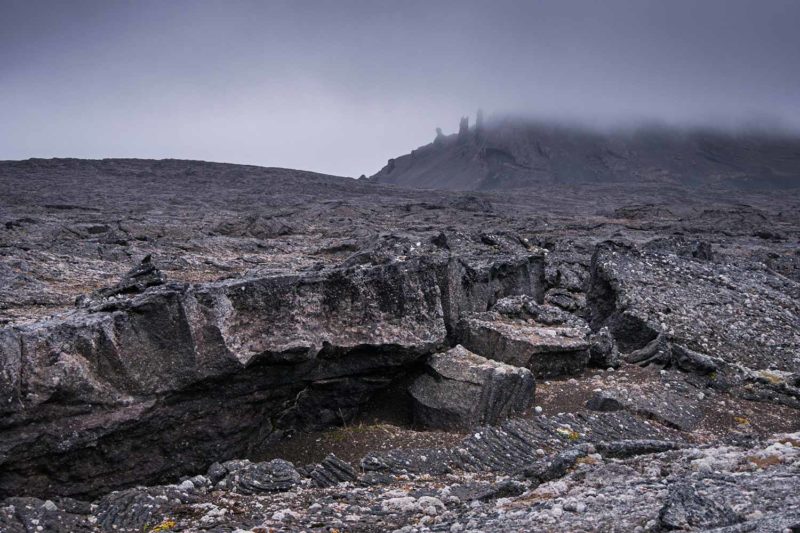

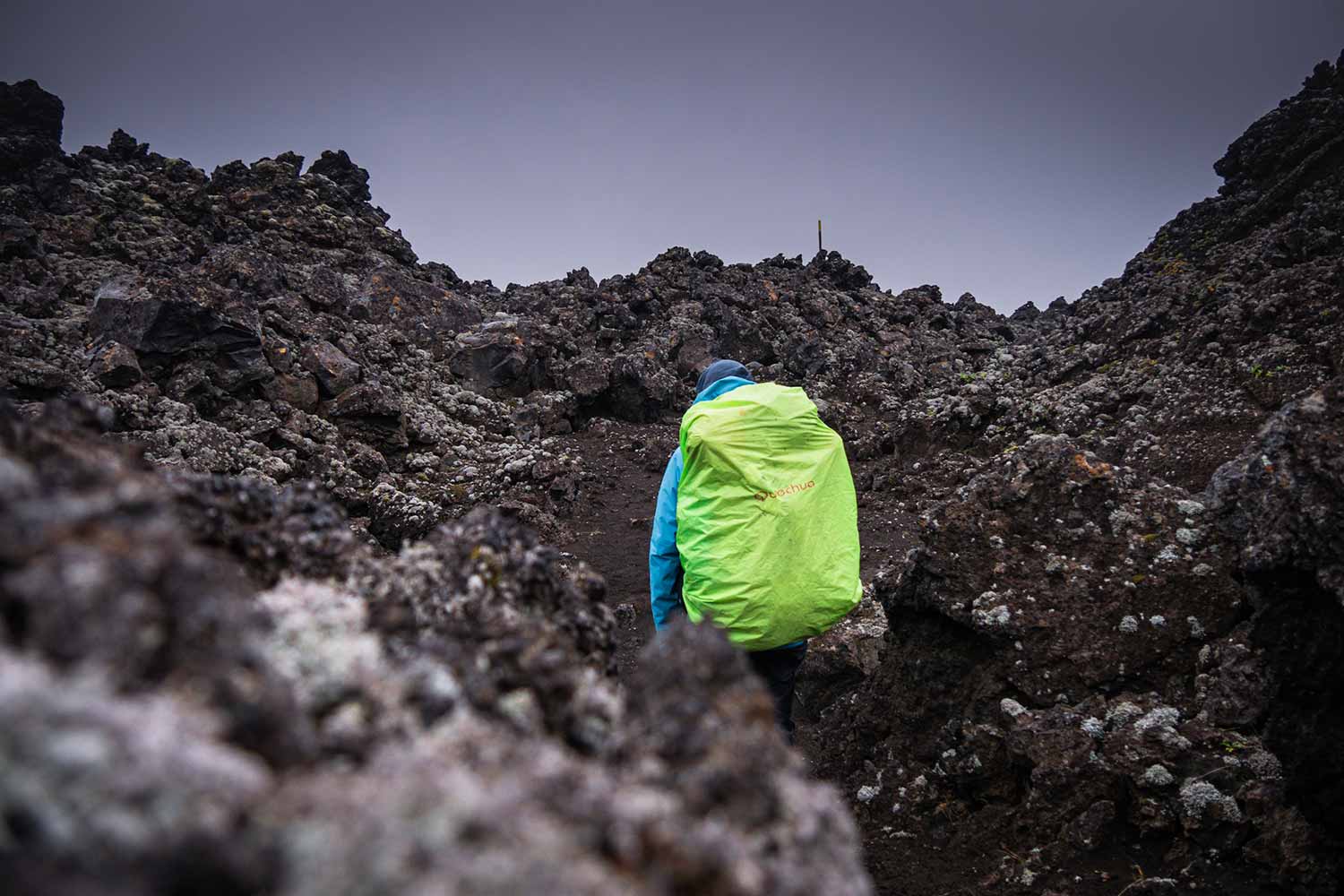

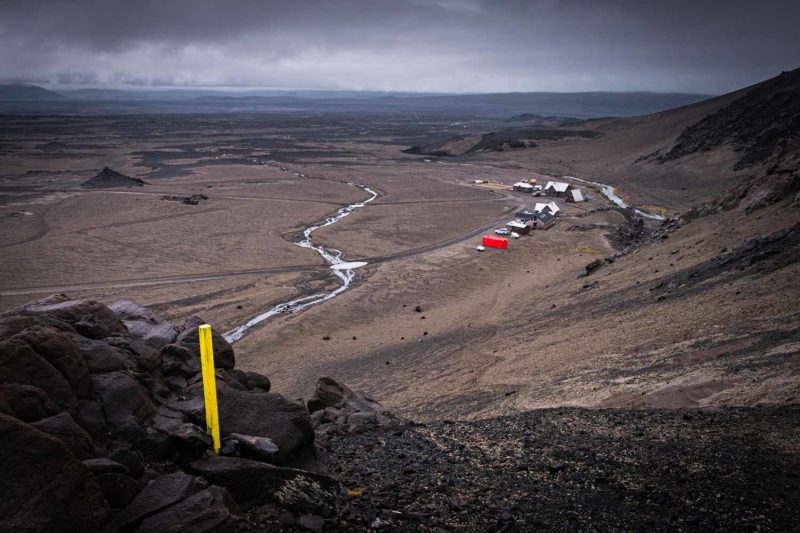
Dreki hut.
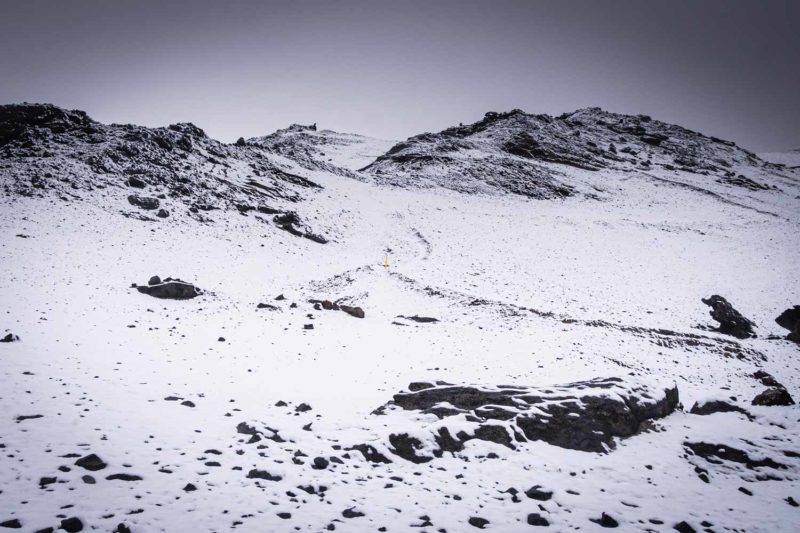
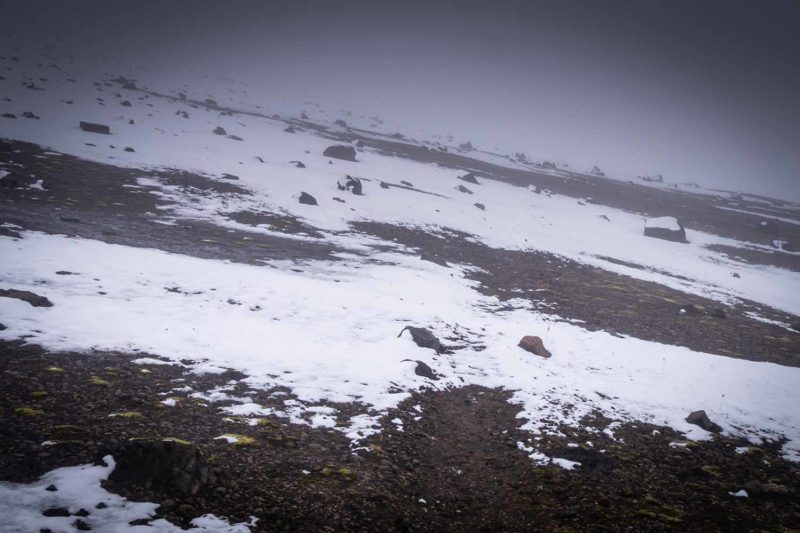
Dyngjufjöll mountains.
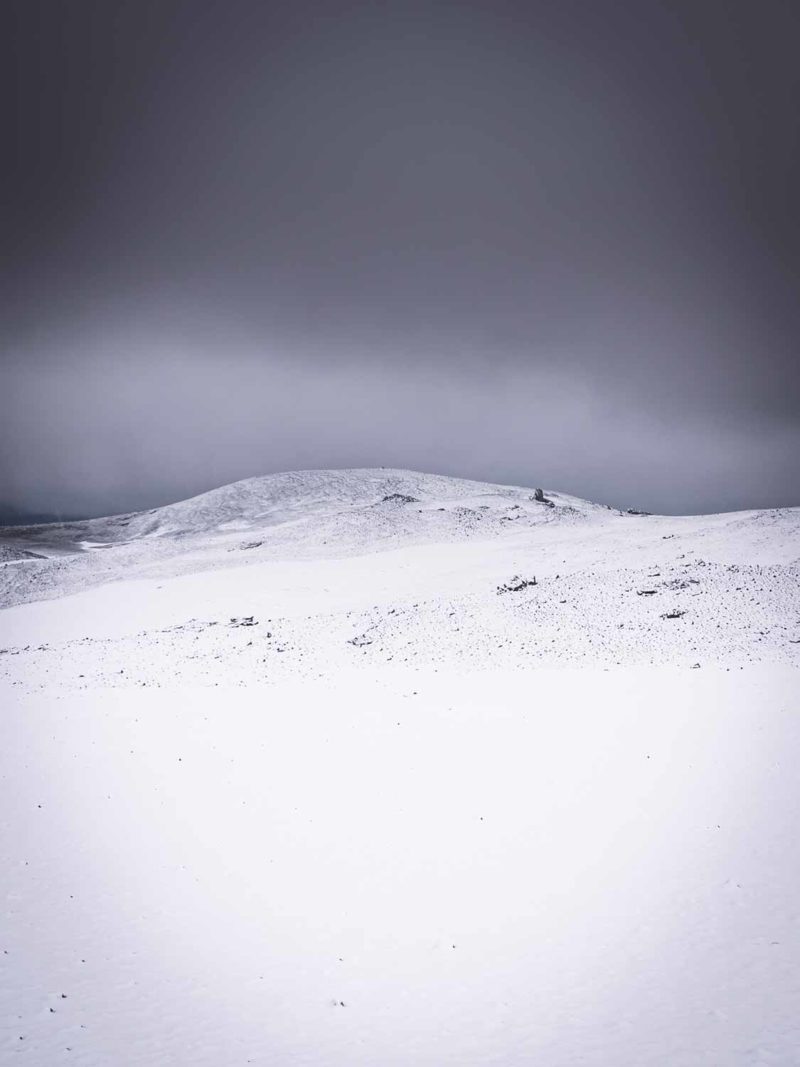
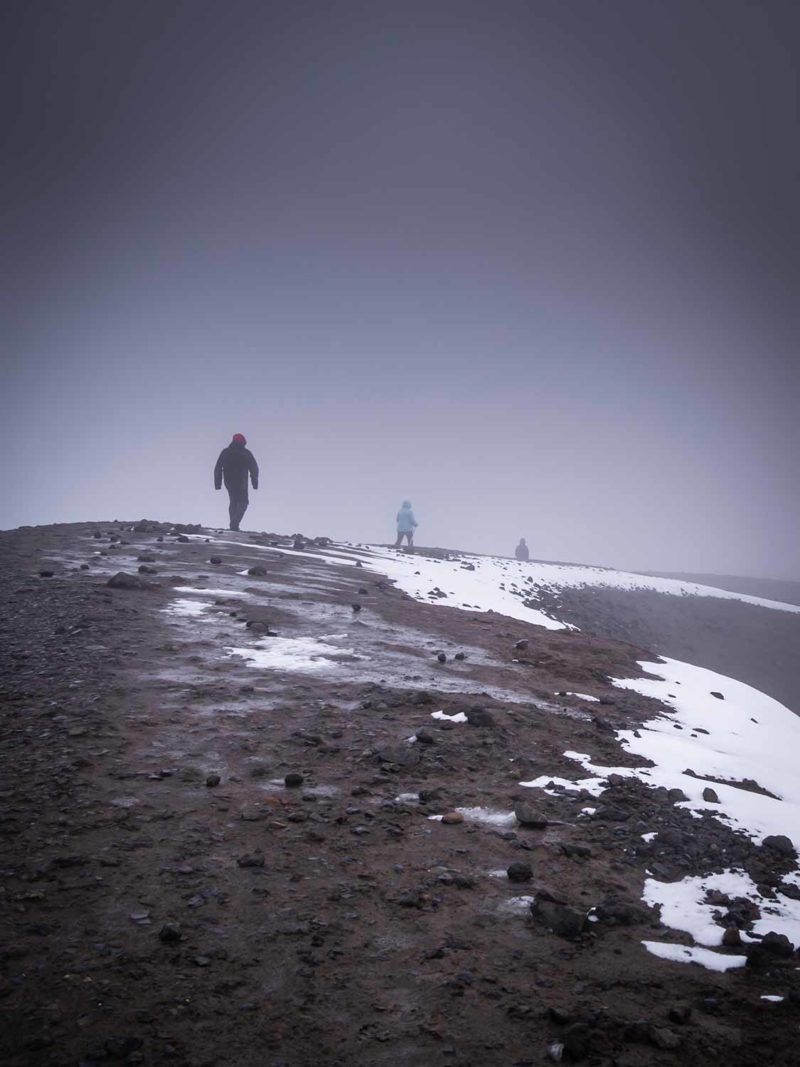


In front of Askja, the invisible.
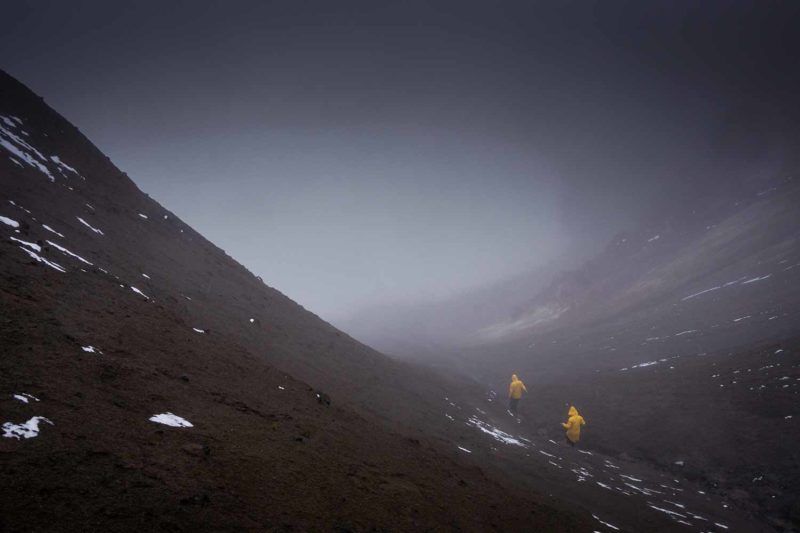

Viti crater on the left.
